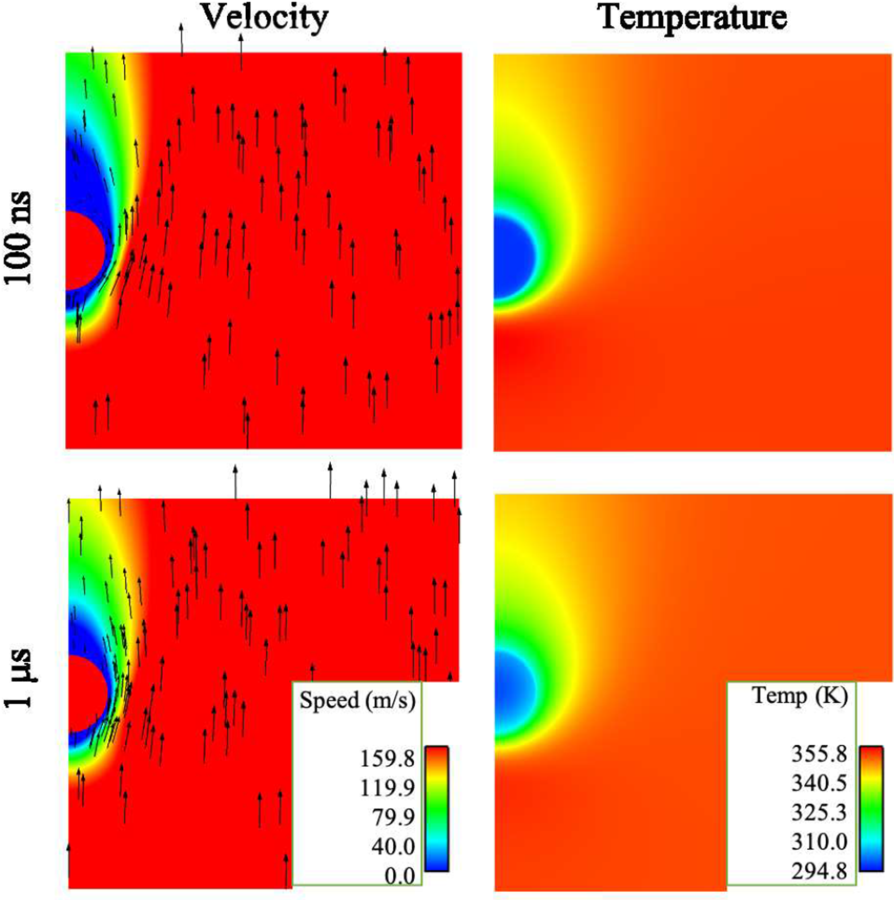Ejecta are small particles released from an intensely shocked material’s surface defects. The subsequent transportation and breakup, especially during the secondary breakup process, creates an interesting multiphysics problem which involves hydrodynamics, chemical reactions, and multiphase materials. These physics occur under extreme conditions and must be simulated.
Description
Ejecta are small particles within an impulsively driven flow. Of importance to the research at FMECL is the study of ejecta that propagate from a material when the surface is rapidly accelerated, such as during an intense shock. In this case, a shock driven Richtmyer-Meshkov instability causes the initial ejecta release from the material, in which the shock wave interacts with the small imperfections on the surface of the material. Such shocks are often intense enough to cause some sort of melting of the material, creating a difficult multiphysics problem that involves the considerations of multiphase materials, hydrodynamics, heat and mass transfer, and chemical reactions. Studies on ejecta are also found in volcanic explosions, astrophysics, respiratory events, and other high-energy applications.
We collaborate with scientists at Los Alamos National Laboratory to simulate this complex multiphysics problem using their state-of-the-art hydrodynamics codes.
Our research in this area has been funded by Los Alamos National Laboratory and the Joint Center for Resilient National Security (JCRNS) at Texas A&M University.
Images

Velocity and temperature fields for a resolved simulation of solid particle shock acceleration. [1]
Further Reading
- R Myers, F Ouellet, N Denissen, J Regele, J McFarland, “Analysis of a Reaction Mechanism for Use in Ejecta Particle Simulations” APS Topical Group on Shock Compression of Condensed Matter (2023) – Presentation (PowerPoint)
- R Myers, F Ouellet, T Nielsen, N Denissen, J Regele, J McFarland, “Implementation of Diffusion and Reaction Mechanisms for Reactive Ejecta Simulations” APS Division of Fluid Dynamics (2022)
- Maxon, W. C., Nielsen, T., Denissen, N., Regele, J. D., and McFarland, J. (April 9, 2021). “A High Resolution Simulation of a Single Shock-Accelerated Particle.” ASME. J. Fluids Eng. July 2021; 143(7): 071403. https://doi.org/10.1115/1.4050007
